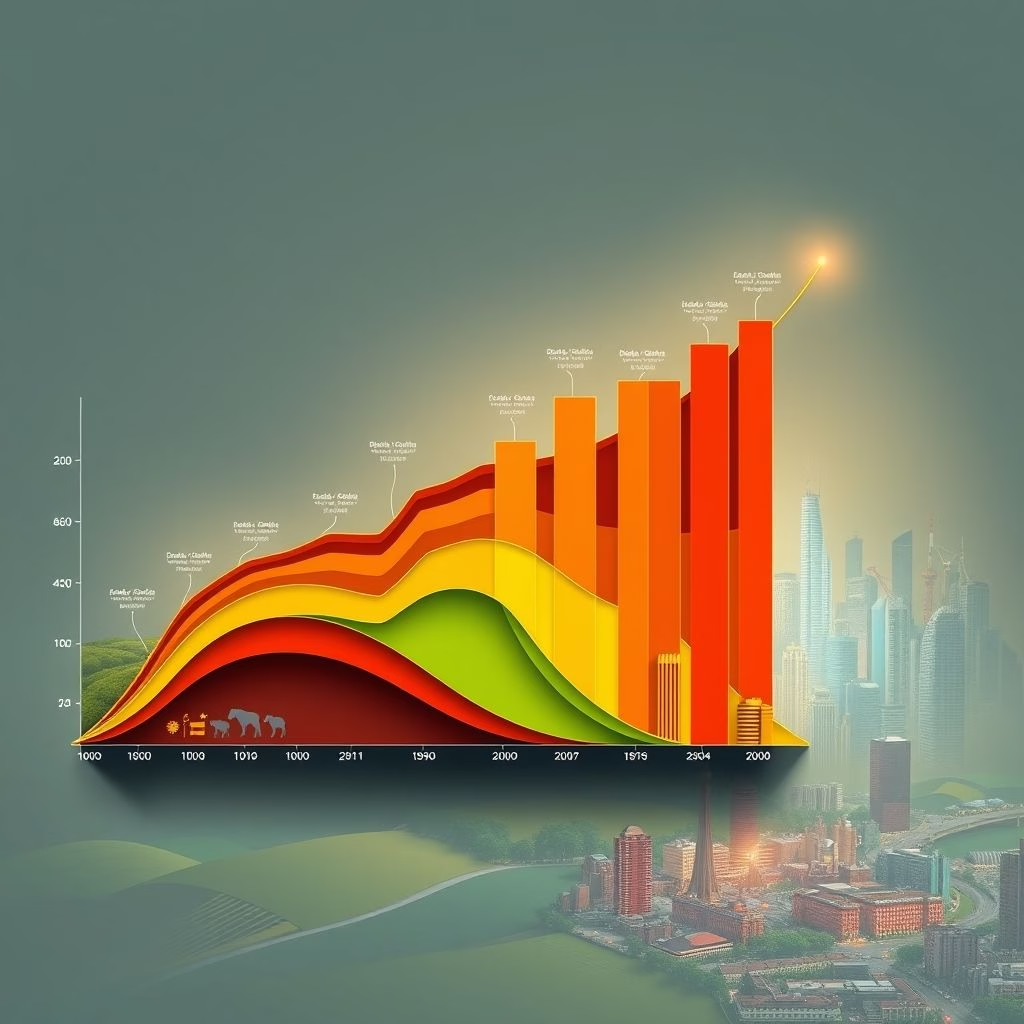The Ever-Expanding Globe: A Look at World Population Through Time

The Human Story: A Population Perspective
The story of humanity is intricately woven with the threads of population growth. From the earliest days of settled agriculture to the bustling metropolises of today, the number of people inhabiting our planet has undergone a remarkable transformation. Understanding this evolution is crucial to comprehending the challenges and opportunities facing our world.
The Dawn of Agriculture and the First Millions
Imagine a world vastly different from our own. Around 8000 B.C., at the dawn of agriculture, the global population was a mere fraction of what it is today. Estimates place the number at approximately 5 million people. This era marked a pivotal shift, as the ability to cultivate crops and domesticate animals provided a more stable food supply, setting the stage for future population increases.
Slow and Steady: The Centuries Before Acceleration
For millennia, population growth proceeded at a relatively slow pace. By 1 A.D., after thousands of years of incremental gains, the world population had reached an estimated 200 million. The annual growth rate during this period was remarkably low, under 0.05%. This reflects the constraints of limited resources, disease, and the challenges of survival in a pre-industrial world. Population growth was a delicate balancing act.
The Industrial Revolution: A Turning Point
The pace of growth changed dramatically with the advent of the Industrial Revolution. Technological advancements, improved sanitation, and advances in medicine combined to lower death rates and increase lifespans. This spurred unprecedented population growth. Reaching the first billion people took until around 1800. However, the subsequent billions were achieved at an ever-accelerating rate. The world was changing rapidly, and population figures reflected that change.
The Modern Era: Billions and Beyond
Today, the world population stands at billions, a testament to the remarkable resilience and adaptability of the human species. As we move into 2025, the global population continues to expand, albeit at a slightly slower pace than in previous decades. The current annual growth rate is estimated to be around 0.85%, which translates to an increase of approximately 70 million people each year. This growth necessitates careful consideration of resource allocation, sustainable development, and global cooperation.
Tracking the Numbers: Data and Projections
Understanding world population dynamics requires reliable data and insightful projections. Several organizations are dedicated to tracking and analyzing these figures. The U.S. Census Bureau, for instance, provides valuable data and estimates. Additionally, websites like Worldometers offer real-time population clocks and projections, allowing for a dynamic view of global population trends. Other organizations around the world contribute to our collective understanding of how populations are evolving.
The Road Ahead
The story of world population is far from over. As we look to the future, understanding the forces that shape population growth – including technological innovation, environmental challenges, and social dynamics – will be critical. The decisions we make today will influence the trajectory of human civilization for generations to come.
The ongoing evolution of our global population presents a complex web of interconnected challenges and opportunities. By carefully analyzing the historical trends and considering the complex factors involved, we can be better prepared for what lies ahead.




